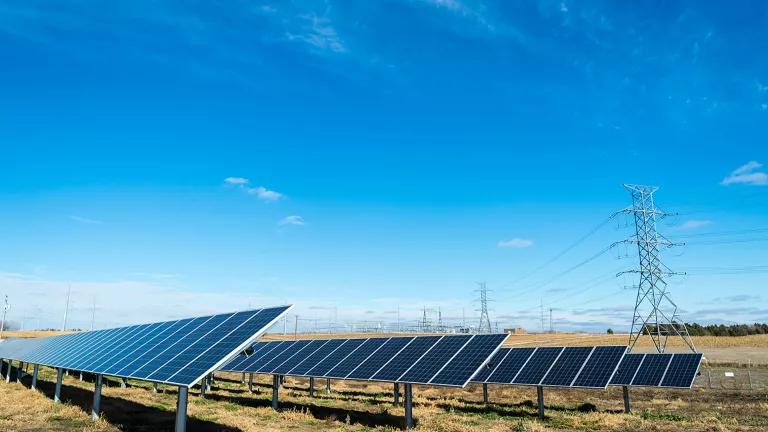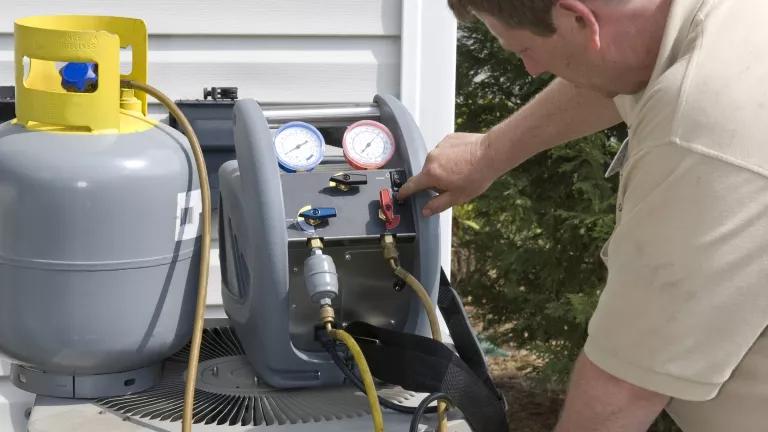Down to the Wire: Progressive Permitting Reforms Will Accelerate Renewable Energy and Transmission Buildout and Help Meet U.S. Climate Targets

Randy Hampton/U.S. DOE
In order to reach our climate goals of 100 percent carbon-free electricity generation by 2035 and net-zero greenhouse gas emissions economy-wide by 2050, the United States must build renewable energy generators and transmission infrastructure at a rapid rate. The 2022 Inflation Reduction Act (IRA) contains significant federal investments that could fund this clean energy buildout at the necessary speed and scale. In fact, the IRA’s unprecedented investments could expand renewable energy and storage deployment nearly fourfold compared with today’s levels.
Unfortunately, the full buildout of clean energy infrastructure promised by the IRA is at risk because of the bottlenecks and barriers built into the current energy infrastructure planning and permitting system. Our current system of planning and permitting simply cannot support a buildout at the speed and scale needed to take full advantage of IRA funding and equitably meet our climate goals.
Planning and permitting is currently stymied by (1) siloed permitting processes for siting large transmission projects, (2) local opposition to large-scale renewable and transmission projects, (3) insufficient federal agency resources, coordination, and accountability for environmental reviews, and (4) a lack of planning to identify, avoid, and mitigate impacts on sensitive habitat and wildlife.
This paper examines these four stumbling blocks and proposes near and long-term solutions. By making it easier to site and pay for the transmission lines necessary to get this clean energy to all areas of our country, by addressing local barriers to clean energy projects through early engagement and the sharing of benefits with host communities, by improving the permitting process for clean energy projects, and by utilizing “smart from the start” planning to maximize conservation benefits and mitigate the impacts of these projects, we can realize this clean energy future with health, environmental, and economic benefits for all Americans.




